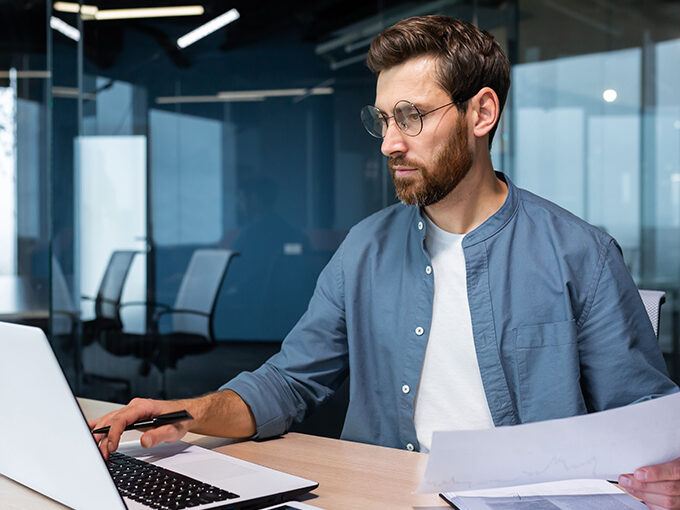An individual selling a residential property should consider whether tax reliefs could reduce or eliminate any capital gain.
When an individual sells their home, it’s often assumed that any uplift in value will be exempt from capital gains tax. While this is generally the case, there are circumstances where the relief is restricted. This can include where the seller has not lived in the property for the whole of their period of ownership, they have more than one home or the property has been let out.
A recent tax case has also highlighted that the rules are often even more complex than they seem and, despite this being a heavily-tested area of the legislation, surprising results can prevail.
What is Private Residence Relief?
A residential property gain will qualify for Private Residence Relief (PRR) (sometimes referred to as main residence relief, principal private residence relief or PPR relief) for any periods of ownership during which the property has been occupied (or deemed to have been occupied) as the seller’s only or main residence. While there is no minimum period of occupancy to obtain PRR, there should be some indication of a degree of permanence.
PRR works by exempting from tax a proportion of any capital gain realised on the disposal of the property, based on the amount of time the property has been occupied (either actual or deemed) as the seller’s only or main residence, when compared to the total period of ownership.
The case of Gerald and Sarah Lee considered the meaning of ‘period of ownership’. The taxpayers had bought a property with land, demolished the house, and spent two and a half years building a new house. They then moved into the new house and lived there for just over a year before selling it. The tribunal held that the ‘period of ownership’ for PRR purposes was the period of ownership of the “dwelling-house”, not the land. The taxpayers’ gain on the sale of the house was therefore fully exempt from capital gains tax. As a result of this decision, individuals who have recently made PRR claims may benefit from revisiting them and it also opens up tax planning opportunities.
What is deemed occupation?
The seller is treated as having occupied a property for the last nine months of ownership, regardless of how the property has actually been used during that time, provided the property has at some point been the individual’s only or main residence.
An individual is also deemed to occupy a property for:
- Any period during which the individual is employed abroad, and all the duties of the employment are performed outside the UK.
- A period of up to four years (or separate periods of absence which together do not exceed four years) during which the owner is absent from the property by reason of working elsewhere, whether in the UK or abroad.
- Any period of absence not exceeding three years, or periods of absence which together do not exceed three years.
Relief under (1) and (2) above is also available where the individual lives with a spouse or civil partner who satisfies the relevant work criteria.
An individual can accrue more than one period of deemed occupation in respect of a single property, but in most cases must occupy the property both before and after the relevant period to be eligible for relief.
Delays in taking up residence
If an individual buys a property that becomes their only or main residence within two years, the individual will be deemed to occupy the property from the date they bought it, if:
- Nobody else lived in the property between the purchase and occupation; and
- The individual moves into the property following either: construction, renovation, redecoration or alteration of the property; or the disposal of the individual’s previous only or main residence.
What if I have more than one residence?
Generally, an individual can only have one main residence at any given time. This includes periods of deemed occupation, which cannot overlap with any periods for which another property is the individual’s main residence. However, the final nine months of ownership will always be exempt, regardless of whether the individual has another property that qualifies as their main residence during this time.
Where an individual owns more than one property, their main residence will be a question of fact, unless an election is made (see below). Normally, the main residence will be the property most commonly occupied as a residence by the individual.
The following points may be considered in determining an individual’s main residence, but this list isn’t comprehensive or necessarily definitive:
- The address on the individual’s tax return forms,
- The address on third party correspondence,
- The furnishings in each residence,
- Where the individual and their family spend most time,
- Where the individual is registered to vote,
- Where the individual’s car is registered and insured, and
- Utility bill usage.
Electing a main residence
If an individual lives in two or more properties, they can elect one property as their main residence. The election must be made within two years of the date on which there is a change in the number of residences, but the elected residence doesn’t need to be the one in which the individual spends most time. It may be beneficial to elect the property likely to generate the largest future capital gain.
Only one property can be elected as the individual’s main residence at any one time, but the election can be changed within the two-year window. For tax planning purposes, there are certain scenarios in which this may be beneficial.
If the property for which a main residence election has been made ceases to be occupied as a residence (for example, it is left empty or tenanted), the election will lapse and the individual’s main residence will be determined based on the facts (until a further election can be made).
What is lettings relief?
The availability of lettings relief, which previously provided up to a further £40,000 of relief for taxpayers who let a property that was at some time their main residence, was significantly reduced from April 2020. Now, the relief will only be available to homeowners where they share occupancy of the property with a tenant.
What if I use part of my home to run my business?
PRR relief may be restricted if part of the main residence is used exclusively for business purposes. In this case, it will be necessary to apportion the capital gain between the business and private elements, as PPR relief will only be available on the private element. The apportionment should be made on a just and reasonable basis, and in practice is usually based on the floor area of the business space compared to the rest of the property.
Spouses, civil partners and PRR
Where spouses or civil partners are living together, they can only have one main residence between them. If, at the date of marriage or civil partnership, each party has their own residence, and they continue to use both properties as residences, they can jointly nominate which of the properties is to be treated as their main residence. The two-year window for making the election starts on the date of marriage or the date the civil partnership is registered.
How we can help
With the reduction in the capital gains tax annual exempt amount from £6,000 in 2023-24 to £3,000 for 2024-25 onwards, and the comparatively high rates of capital gains tax on residential property (28% in 2023-24 and 24% in 2024-25 compared to 20% on most other assets), the availability of PRR is important and valuable. The requirement to report and pay CGT within 60 days of completion of a residential property sale also means these complex calculations need to be undertaken within a strict timeframe; it’s therefore prudent to seek advice early whenever possible. If you’d like to know more about how we can help you make the most of this relief, please get in touch with Lizzie Murray or your usual Saffery contact.
Contact Us
Partner, London
Key experience










